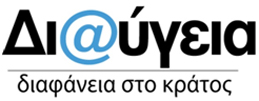Will the Agrimi survive the Samaria Gorge?
\r\n
The endemic Cretan Capricorn in Crete might become extinct due to hybridization and poaching.
\r\nIn recent years, the population of the Agrimi (Cretan Capricorn – Capra aegagrus cretica) has been declining drastically. The Cretan Capricorn is endemic to Western Crete and is considered to be endangered. With the help of GPS-telemetry, investigations on the behavior and home ranges of the endangered Cretan Capricorn are being conducted to be able to define sustainable conservation measures, to prevent hybridization with domestic goats and to reduce the vulnerability to poaching.\r\n\r\nThe Agrimi – the most important endemic and seriously threatened mammal in Greece – is the Cretan Capricorn (Capra aegagrus cretica), which only lives in the White Mountains and the Samaria Gorge (the National Park of Samaria (SNP) and UNESCO Biosphere Reserve ). The Samaria National Park (SNP) was founded in 1962, primarily to ensure the conservation of the Capricorn. It gradually became one of the main tourist attractions of the island, with an average of 230,000 visitors per year (period: 1981-2005). Therefor the SNP is not only important as the habitat for the endangered Capricorn, but has also a high societal value and is an important source of income for a country in economic crisis.\r\n\r\n

- \r\n
- The actual habitat use of the Capricorn over different seasons.
- How and when do the home ranges of the Capricorn and domesticated goats overlap?
\r\n
\r\n
\r\nTo be better able to protect the Capricorn against poaching, knowledge is needed about:\r\n
- \r\n
- Which parts of the home ranges are most vulnerable to poaching
- In which season is protection of the Capricorns most problematic?
\r\n
\r\n
\r\n \r\n\r\nHow is ITC-UT contributing?\r\nOver the last two years the Department of Natural Resources (NRS) of the Faculty of Geo-Information Science and Earth Observation, University of Twente together with researchers from the University of Crete and the National History Museum of Crete (NHMC) fitted four Capricorns with GPS-telemetry to be able to get more insight in their distribution and habitat use. The GPS telemetry data is being used as input for two methods at different scale: (1) seasonal home range analysis of the collared individuals in the SNP core zone, (2) predictive habitat modeling for all the White Mountains range.\r\nFurthermore, the Capricorn behavior will be linked to vegetation biomass and floristic composition and its change during the year. One of the techniques used is hyper-temporal NDVI (Normalized Difference Vegetation Index) data of MODIS (Moderate Resolution Infrared Satellite: Leyequien et al., 2007). This will provide a good insight to which habitat conditions the Capricorns prefer to occupy during the different seasons.\r\n\r\n \r\n\r\nWhat has been achieved so far and how to proceed?\r\nAt present the home ranges of four Capricorns (two males and two females) have been analyzed. The behavior and movements have been related to vegetation type and seasonal biomass changes. As the collared Capricorns mostly occupied the Samaria Gorge area, where they were also captured, the detailed information concerning habitat use and home range is only available in and around the gorge area. However, the White Mountains area extends far outside the gorge area and most impact (hybridization and poaching) occurs in the outer areas of the Capricorn distribution range. Further research is therefore needed and more Capricorns – preferably from the outer areas of the SNP – have to be fitted with GPS telemetry to provide the park rangers and decision makers with more accurate information on how to protect the Cretan Capricorn and prevent the extinction of this endangered species.\r\n\r\n





